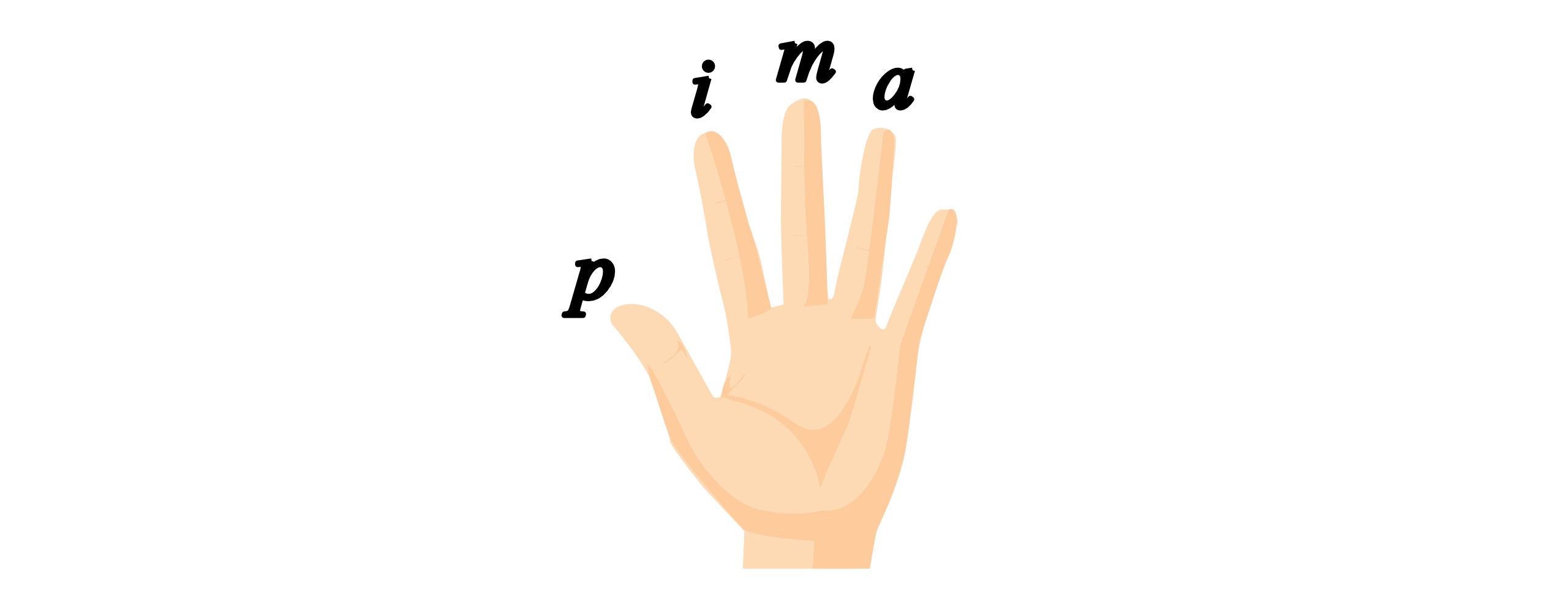In this beginner guitar lesson, we'll be learning how to play fingerstyle guitar. Fingerstyle is a great style of music to learn for both the acoustic guitar and the electric guitar. It tends to sound very piano-like since you play the bass parts and the melody parts at the same time. Fingerstyle guitar is the perfect style of music for playing without any other musicians. In this lesson, we'll be going over a lot of different things, so don't worry if you need to take it one step at a time and come back to this lesson a few times. Once you've got all these techniques down, there's a jam track that you can download to apply your new skills to music.
To get the most out this lesson, you'll need to have the fundamentals of the guitar under your belt. You can learn those fundamentals in our Beginner Guitar Quick-Start Series.
Finger Names
Before getting into the fingerpicking technique it's important that you know which fingers you're supposed to use when reading sheet music. In the diagram below you can see the letters that represent each finger. The letters come from the Spanish words for each finger. Typically, the pinky finger isn't used in fingerstyle guitar, so it's not labeled.

Using Your Thumb
We'll start by getting a hang of using your thumb while fingerpicking. With this exercise, you'll simply be playing quarter notes with your thumb as you switch between the bottom three strings.

Using Your Finger
Next, we'll work on using your finger to pick the string. This exercise is similar to the previous one. You'll use your index finger to pick quarter notes on the top three strings.

Thumb & Fingers Exercise
Once you've got a hang of using your thumb and fingers separately, we'll try combining them. Take it nice and slow and try alternating between using your thumb to play the low E string and using your fingers to play the G, B, and E strings.

Rolling Technique
Rolling is a much more challenging technique to master. You may need to spend some more time on the previous exercises before trying to challenge some of these more difficult exercises. Rolling is when you use your fingers to go up and down the strings while playing a chord.
Rolling Up Exercise
First, we'll attempt rolling up. Feel free to work on this as slowly as you might need to to get it sounding clean. If you need to you may want to anchor your hand on the body of the guitar with your wrist or your pinky.

Rolling Down Exercise
Next, we'll try rolling down. For some people, this is a little bit more challenging, so there's nothing wrong with slowing it right down if you need to. Try playing the exercise below.

Rolling Exercise
Now that you've got the hang of rolling up and rolling down individually we'll try combining the two techniques so that you can perform this rolling exercise.

Constant Bass Technique
A common technique that's used in fingerstyle music is the constant bass technique. This technique is basically when your thumb plays the bass notes at the same time as your fingers are playing the melody. This technique is great for solo guitar since you are basically your own accompaniment.
This first exercise is very simple. We'll be using a C chord throughout these exercises. You'll just be playing quarter notes on the A string with your thumb while fretting the whole chord.
Exercise #1

Once you've got that down, you can try adding a C note on the B string. It takes some coordination to get it sounding clean, but you can feel free to take your time and slow it down as much as you might need to.
Exercise #2

Musical Application
Now that you've got an idea of how to use all the basic techniques, we'll apply it all to music. Click on the link below the video to download the jam track. It's a simple track that just stays on a C major chord so you can work on all these techniques.

